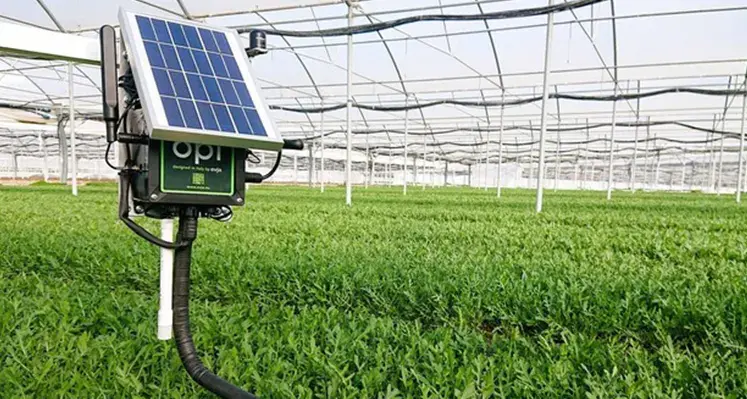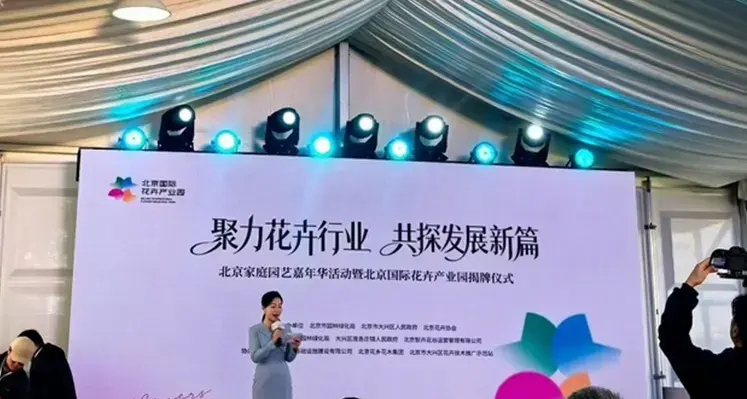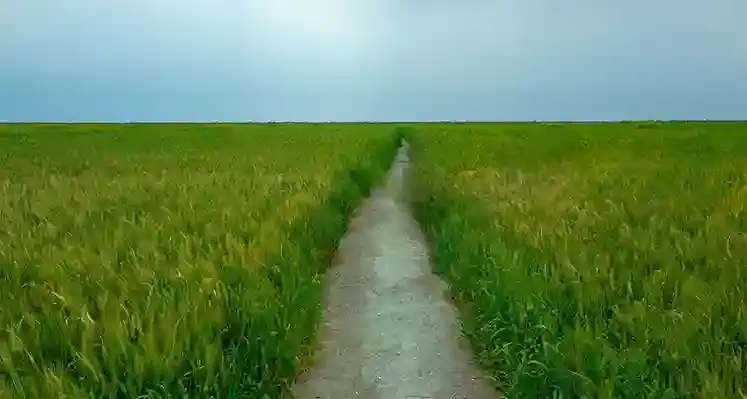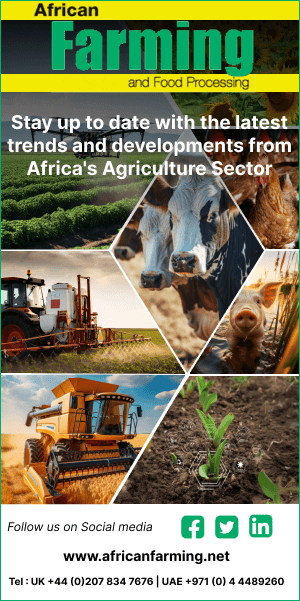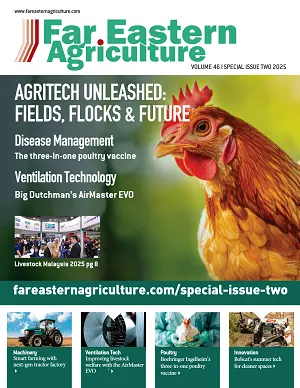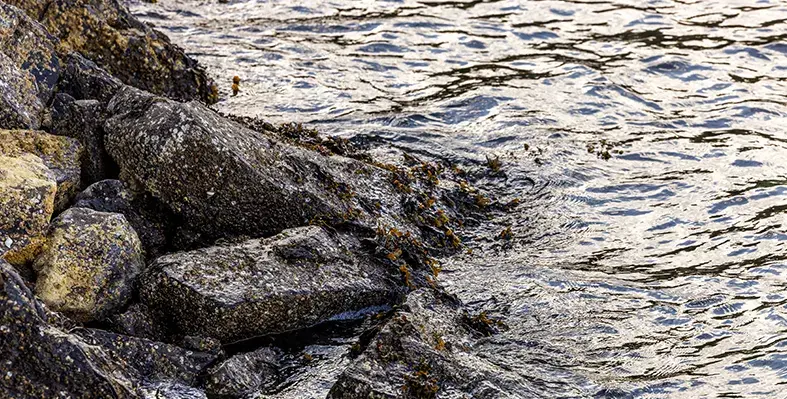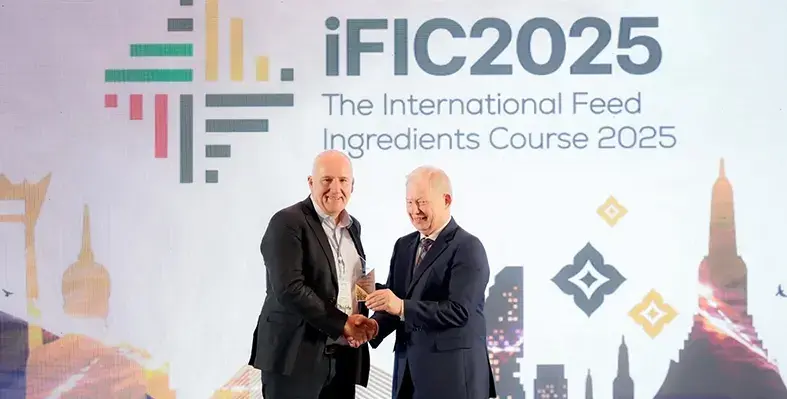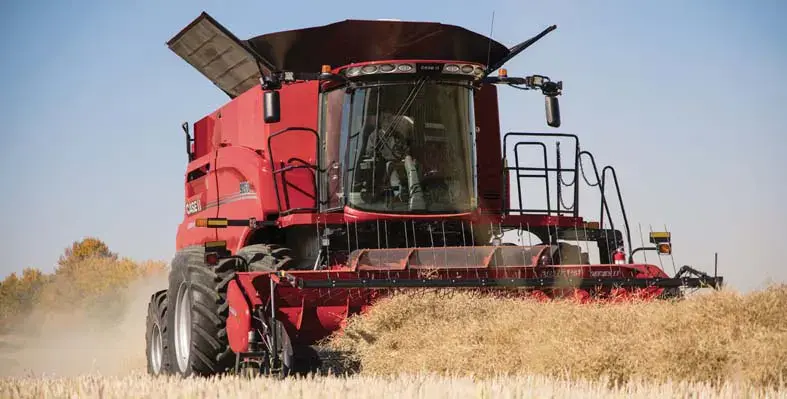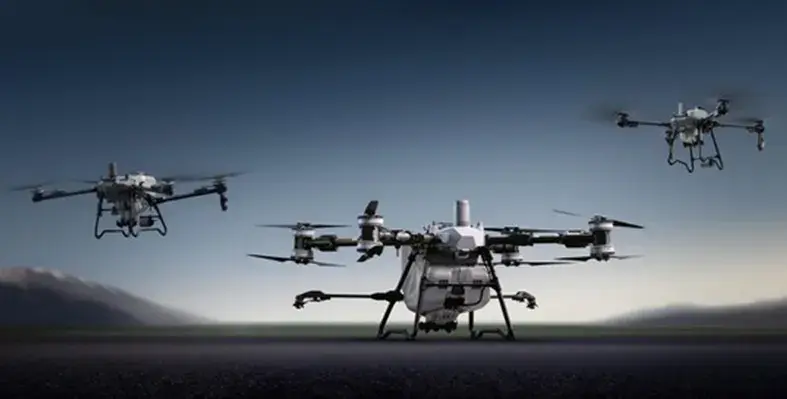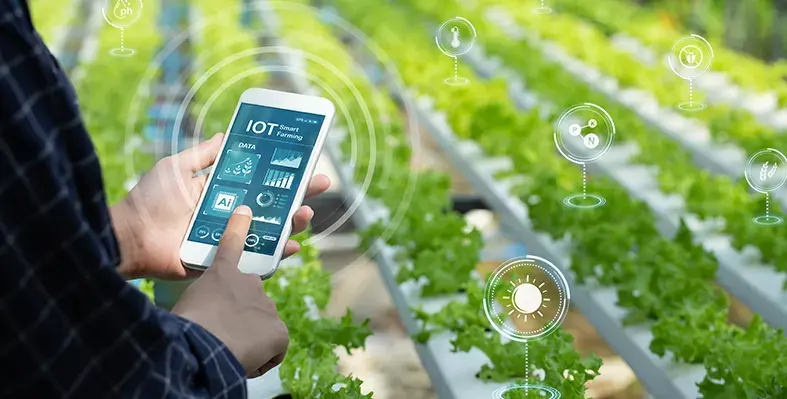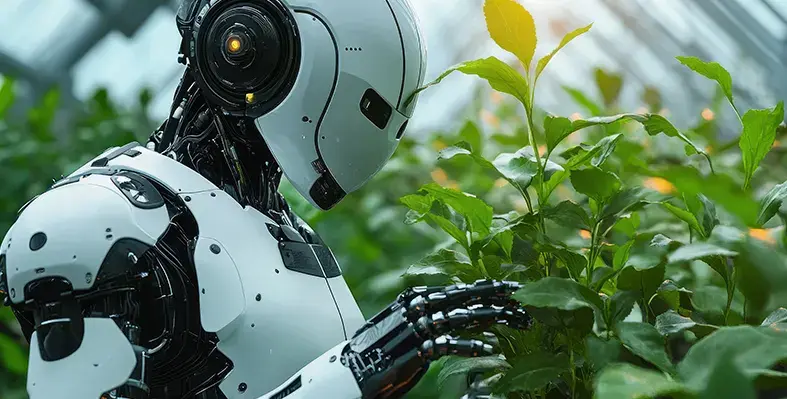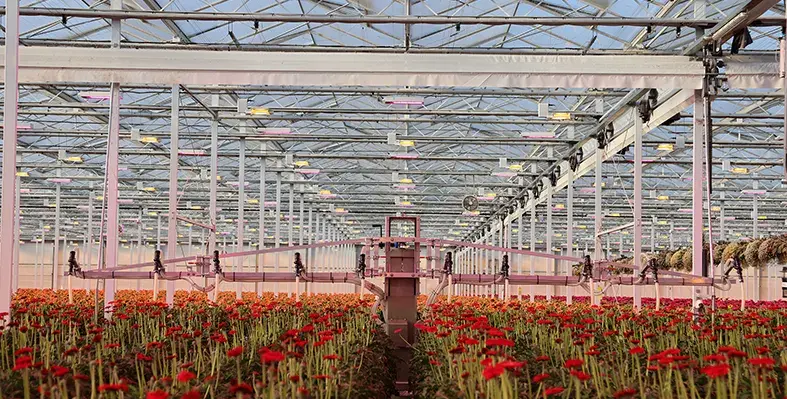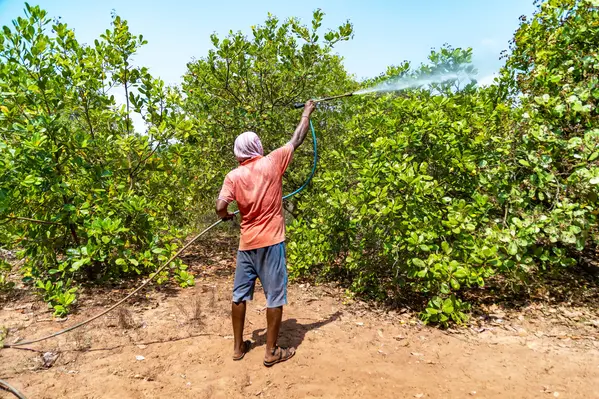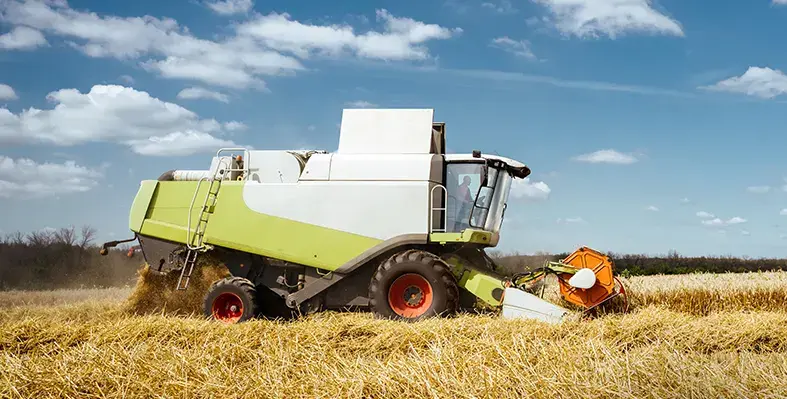In The Spotlight

The funding is aimed at accelerating the adoption of modern farming technologies and boosting productivity across the country’s agri-food sector. (Image credit: The Malaysian Reserve)
The Malaysian government has reaffirmed its commitment to strengthening national food security by allocating US$50mn under the 13th Malaysia Plan (13MP) to continue the Technology Development, Mechanisation and Automation Modernisation Programme (TMA).
The funding is aimed at accelerating the adoption of modern farming technologies and boosting productivity across the country’s agri-food sector.
Agriculture and Food Security Minister Datuk Seri Mohamad Sabu said the allocation reflects a broader strategy to modernise agriculture through innovation, automation and digital transformation. The programme will place strong emphasis on Fourth Industrial Revolution (4IR) technologies and Artificial Intelligence (AI), positioning Malaysia’s farming sector for long-term resilience and competitiveness.
“This initiative will be continued through TMA with an allocation of RM50 million, along with the addition of Fourth Industrial Revolution (4IR) technology and Artificial Intelligence (AI) to improve productivity and early warning systems,” he said in the Dewan Negara.
Mohamad was responding to a question from Senator Puan Rita Sarimah Anak Patrick Insol on measures to improve mechanisation levels and technological innovation, particularly among small and medium-scale farmers. He explained that the initiative falls under Strategic Thrust 1 of the National Agri-Food Policy 2021–2030 (DAN 2.0), which prioritises smart farming and agricultural modernisation as pillars of food security.
“KPKM is always working to take transformative steps to strengthen the nation’s food security, including through the use of modern technology to increase productivity,” he added.
Efforts to enhance mechanisation span the entire agricultural value chain, from research and development to field-level implementation, while also strengthening the supporting ecosystem. The Malaysian Agricultural Research and Development Institute (Mardi) has developed mechanisation and automation solutions for crops including chilli, ginger, watermelon, pineapple and paddy, with 200 farmers already trained under these technology packages. Plans are underway to scale up adoption further, involving 50 additional farmers by 2027.
Support for mechanisation was also extended under the 12th Malaysia Plan (12MP), with investments in tractors, combine harvesters, transplanters and agricultural drones to boost service capacity across agencies under the ministry. These services are then made available to small and medium farmers at more affordable rates.
The Farmers’ Organisation Authority is complementing these efforts through a matching grant scheme that enables registered members to acquire small and medium machinery, including drones and specialised agricultural equipment. Under 13MP, the authority will roll out the Paddy Initiative, Transfer of Technology and Resilient (Pintar) programme, focusing on machinery ownership to improve yields and address labour shortages.
To ease financial barriers, Agrobank is expanding access to low-cost financing, including the Agri-Food Financing Fund 2025 and the Agri-Food Value Chain Modernisation Programme 2025, both offering attractive rates to encourage technology adoption.
Mohamad said initiatives such as Mardi’s Technology Showcase (Showtech), the Malaysia Agriculture, Horticulture and Agrotourism Exhibition (MAHA) and the National Farmers, Breeders and Fishermen’s Day (HPPNK) will continue to drive awareness and inclusivity, as the ministry works to build a more efficient, competitive and future-ready agricultural sector.
Iraq’s ambition to achieve wheat self-sufficiency is faltering as a deepening water crisis tightens its grip on the country, threatening food security, rural livelihoods and one of the world’s oldest agricultural regions.
For generations, Iraqi farmer Ma’an al-Fatlawi has relied on the Euphrates River to irrigate his wheat fields near Najaf. But today, the river that once nourished the Fertile Crescent is receding at an alarming rate. Standing beside a cracked irrigation canal, he waits for his limited water allocation, knowing there are few alternatives. “Drilling wells is not successful in our land, because the water is saline,” al-Fatlawi said.
Iraq, historically one of the Middle East’s largest wheat importers, had made notable progress in recent years. A state-backed drive to boost domestic wheat production delivered three consecutive annual surpluses, raising hopes of long-term food independence. Those gains, however, are now under serious threat.
The country is enduring what experts describe as the driest year in modern history. Water levels in the Tigris and Euphrates rivers have plunged, forcing farmers to scale back planting. The wheat harvest could fall by as much as 50 percent this season.
“Iraq is facing one of the most severe droughts that has been observed in decades,” the UN Food and Agriculture Organization (FAO)’s Iraq representative Salah El Hajj Hassan told Reuters.
Climate change is compounding Iraq’s vulnerability. The largely arid nation ranks fifth globally for climate risk, with average temperatures rising rapidly and rainfall expected to decline further. At the same time, Iraq depends on neighbouring countries for roughly 70 percent of its water supply, leaving it exposed to upstream dam projects in Turkey and Iran.
The FAO says reduced cross-border water flows are the main driver of the crisis, prompting Baghdad to introduce strict rationing. Iraq’s water reserves have collapsed from 60 billion cubic metres in 2020 to less than 4 billion today. “Rain-fed and irrigated agriculture are directly affected nationwide,” El Hajj Hassan said.
In response, Iraq’s agriculture ministry has halved the area allowed for river-irrigated wheat in the 2025–2026 season and mandated modern irrigation systems such as drip and sprinkler technology. Rice farming, a highly water-intensive crop, has been banned altogether.
Yet modern irrigation comes at a high cost, placing further strain on rural communities that already make up around 30 percent of the population. Some 170,000 people have been displaced due to water shortages. “This is not a matter of only food security,” El Hajj Hassan said. “It’s worse when we look at it from the perspective of livelihoods.”
Back in Najaf, al-Fatlawi has reduced his wheat acreage to just a fifth of its usual size and laid off most of his workers.

The High-Performance ECU to which you can connect sensors and subsystems to meet the features enabled.(Image credit: Volvo Penta)
Volvo Penta showcased Volvo Penta Co-Pilot, its smart off-highway productivity solutions, for the first time at Agritechnica 2025, highlighting its commitment to innovation, connectivity, and enhanced machine performance.
Designed to help businesses improve efficiency and competitiveness, the advanced vehicle control system opened new possibilities for Original Equipment Manufacturers (OEMs) and end customers across productivity optimisation, digital connectivity, and intelligent vehicle management.
At Agritechnica 2025, Volvo Penta placed the spotlight on Volvo Penta Co-Pilot as a robust, scalable solution for the off-highway sector. Built on proven Volvo Group technologies, the platform provided OEMs and operators with a unified interface to access critical data, insights, and tools. Its flexible architecture allowed multiple features and user interfaces to coexist, ensuring seamless scalability and future readiness as operational demands evolved.
Volvo Penta Co-Pilot was engineered to support fleet owners and machine operators in managing projects more effectively. The system integrated a fully connected machine HMI, advanced machine controls, and a perception camera to enhance on-site safety. Additional capabilities included tyre pressure monitoring, service and maintenance information, and intelligent operator support tools. The platform also supported operator coaching through smart features such as high-precision positioning, load assist on-board weighing (OBW), and vehicle stability control, helping to maximise uptime and operational accuracy.
“In line with our collaborative, partnership approach at Volvo Penta, we worked with customers to tailor the solution to meet their specific needs,” explained Emil Andersson, product planning Industrial, Volvo Penta. “This means they could customize the platform, add to it, and adapt it as their requirements changed, making it a future-proof solution.”
Alongside Volvo Penta Co-Pilot, the company reinforced its reputation as a trusted partner in power solutions for the agricultural and off-highway sectors. Under the theme ‘Made To Move You – Moving Further. Together’, visitors explored the D16 combustion engine, exhaust aftertreatment systems (EATS), and a remanufactured engine, all reflecting Volvo Penta’s focus on performance, reliability, and sustainability.
-
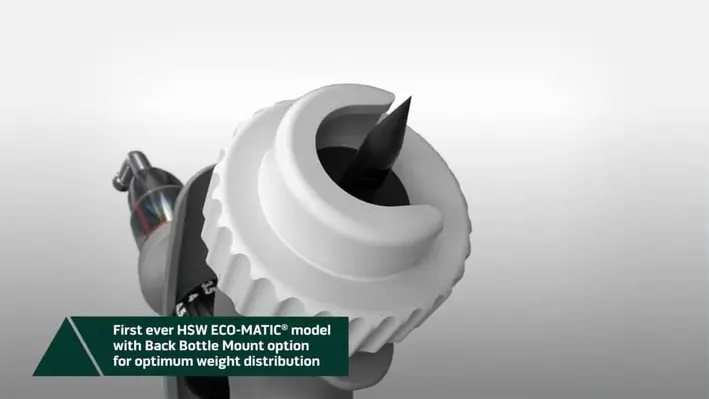
HSW ECO MATIC® 6ml _ 10ml (for injection, oral and pour-on application)
FeedTech Expo 2023
Venue:
Auto Cluster Exhibition Centre
India
Dates:
27-29 October 2023
Website:
https://west.feedtechexpo.com/
Iraq’s ambition to achieve wheat self-sufficiency is faltering as a deepening water crisis tightens its grip on the country, threatening food security, rural livelihoods and one of the world’s oldest agricultural regions.
For generations, Iraqi farmer Ma’an al-Fatlawi has relied on the Euphrates River to irrigate his wheat fields near Najaf. But today, the river that once nourished the Fertile Crescent is receding at an alarming rate. Standing beside a cracked irrigation canal, he waits for his limited water allocation, knowing there are few alternatives. “Drilling wells is not successful in our land, because the water is saline,” al-Fatlawi said.
Iraq, historically one of the Middle East’s largest wheat importers, had made notable progress in recent years. A state-backed drive to boost domestic wheat production delivered three consecutive annual surpluses, raising hopes of long-term food independence. Those gains, however, are now under serious threat.
The country is enduring what experts describe as the driest year in modern history. Water levels in the Tigris and Euphrates rivers have plunged, forcing farmers to scale back planting. The wheat harvest could fall by as much as 50 percent this season.
“Iraq is facing one of the most severe droughts that has been observed in decades,” the UN Food and Agriculture Organization (FAO)’s Iraq representative Salah El Hajj Hassan told Reuters.
Climate change is compounding Iraq’s vulnerability. The largely arid nation ranks fifth globally for climate risk, with average temperatures rising rapidly and rainfall expected to decline further. At the same time, Iraq depends on neighbouring countries for roughly 70 percent of its water supply, leaving it exposed to upstream dam projects in Turkey and Iran.
The FAO says reduced cross-border water flows are the main driver of the crisis, prompting Baghdad to introduce strict rationing. Iraq’s water reserves have collapsed from 60 billion cubic metres in 2020 to less than 4 billion today. “Rain-fed and irrigated agriculture are directly affected nationwide,” El Hajj Hassan said.
In response, Iraq’s agriculture ministry has halved the area allowed for river-irrigated wheat in the 2025–2026 season and mandated modern irrigation systems such as drip and sprinkler technology. Rice farming, a highly water-intensive crop, has been banned altogether.
Yet modern irrigation comes at a high cost, placing further strain on rural communities that already make up around 30 percent of the population. Some 170,000 people have been displaced due to water shortages. “This is not a matter of only food security,” El Hajj Hassan said. “It’s worse when we look at it from the perspective of livelihoods.”
Back in Najaf, al-Fatlawi has reduced his wheat acreage to just a fifth of its usual size and laid off most of his workers.
The Philippines is intensifying its efforts to ratify a landmark international treaty aimed at protecting marine biodiversity in areas beyond national jurisdiction (BBNJ), reinforcing its commitment to ocean conservation and sustainable marine resource management
The Department of Agriculture (DA) has pledged full support to the Department of Foreign Affairs (DFA) in promoting the Senate’s concurrence to the Agreement on the Conservation and Sustainable Use of Marine Biological Diversity of Areas Beyond National Jurisdiction (BBNJ). Signed under the framework of the United Nations Convention on the Law of the Sea (UNCLOS), the BBNJ treaty addresses the conservation and equitable use of marine resources in high seas and other regions beyond exclusive national control.
Although Ferdinand Marcos Jr., President ratified the agreement in 2024-a year after its global adoption - the treaty still requires Senate concurrence before the Philippines can officially participate.
Francisco P. Tiu Laurel Jr., Agriculture Secretary emphasised the agreement's relevance for the Philippines, said, “The BBNJ Agreement is crucial for conserving and sustainably managing marine biodiversity in areas beyond the Philippines’ jurisdiction, allowing the country to safeguard its rich marine ecosystems while ensuring fair access to and equitable sharing of benefits from marine genetic resources.”
As a nation composed of over 7,000 islands and located near areas beyond national jurisdiction (ABNJ), the Philippines has a strong stake in the treaty’s success. It was an early signatory and active participant in the negotiation process, aligning with global conservation goals and the principles of the 2016 South China Sea Arbitration Award.
Undersecretary for Fisheries Drusila Esther Bayate stressed the strategic timing of the ratification: once approved by the Senate, the Philippines will be eligible to participate in the first Conference of Parties (COP1). This milestone event is expected to take place shortly after 60 countries submit their ratification instruments to the United Nations. As of late August, 55 nations have completed the process, with momentum building towards reaching the required threshold during the UN General Assembly from September 23–26.
The BBNJ treaty represents a critical tool for archipelagic nations like the Philippines—not only to influence global marine governance but also to safeguard marine ecosystems, promote fair benefit-sharing, and support the livelihoods of coastal communities reliant on ocean resources.

The funding is aimed at accelerating the adoption of modern farming technologies and boosting productivity across the country’s agri-food sector. (Image credit: The Malaysian Reserve)
The Malaysian government has reaffirmed its commitment to strengthening national food security by allocating US$50mn under the 13th Malaysia Plan (13MP) to continue the Technology Development, Mechanisation and Automation Modernisation Programme (TMA).
The funding is aimed at accelerating the adoption of modern farming technologies and boosting productivity across the country’s agri-food sector.
Agriculture and Food Security Minister Datuk Seri Mohamad Sabu said the allocation reflects a broader strategy to modernise agriculture through innovation, automation and digital transformation. The programme will place strong emphasis on Fourth Industrial Revolution (4IR) technologies and Artificial Intelligence (AI), positioning Malaysia’s farming sector for long-term resilience and competitiveness.
“This initiative will be continued through TMA with an allocation of RM50 million, along with the addition of Fourth Industrial Revolution (4IR) technology and Artificial Intelligence (AI) to improve productivity and early warning systems,” he said in the Dewan Negara.
Mohamad was responding to a question from Senator Puan Rita Sarimah Anak Patrick Insol on measures to improve mechanisation levels and technological innovation, particularly among small and medium-scale farmers. He explained that the initiative falls under Strategic Thrust 1 of the National Agri-Food Policy 2021–2030 (DAN 2.0), which prioritises smart farming and agricultural modernisation as pillars of food security.
“KPKM is always working to take transformative steps to strengthen the nation’s food security, including through the use of modern technology to increase productivity,” he added.
Efforts to enhance mechanisation span the entire agricultural value chain, from research and development to field-level implementation, while also strengthening the supporting ecosystem. The Malaysian Agricultural Research and Development Institute (Mardi) has developed mechanisation and automation solutions for crops including chilli, ginger, watermelon, pineapple and paddy, with 200 farmers already trained under these technology packages. Plans are underway to scale up adoption further, involving 50 additional farmers by 2027.
Support for mechanisation was also extended under the 12th Malaysia Plan (12MP), with investments in tractors, combine harvesters, transplanters and agricultural drones to boost service capacity across agencies under the ministry. These services are then made available to small and medium farmers at more affordable rates.
The Farmers’ Organisation Authority is complementing these efforts through a matching grant scheme that enables registered members to acquire small and medium machinery, including drones and specialised agricultural equipment. Under 13MP, the authority will roll out the Paddy Initiative, Transfer of Technology and Resilient (Pintar) programme, focusing on machinery ownership to improve yields and address labour shortages.
To ease financial barriers, Agrobank is expanding access to low-cost financing, including the Agri-Food Financing Fund 2025 and the Agri-Food Value Chain Modernisation Programme 2025, both offering attractive rates to encourage technology adoption.
Mohamad said initiatives such as Mardi’s Technology Showcase (Showtech), the Malaysia Agriculture, Horticulture and Agrotourism Exhibition (MAHA) and the National Farmers, Breeders and Fishermen’s Day (HPPNK) will continue to drive awareness and inclusivity, as the ministry works to build a more efficient, competitive and future-ready agricultural sector.

Feeding Management offers significant cost savings, improved transparency of feeding programs.(Image credit: SILOKING)
SILOKING’s Feeding Management platform is transforming livestock nutrition by combining precision, transparency, and convenience in one digital solution
Designed for users of SILOKING Data and Wireless weight systems, this web-based feeding tool enables farmers to manage feed rations, monitor costs, and optimise mixing accuracy—all from any internet-connected device. Best of all, it is included free of charge with compatible SILOKING hardware, making advanced feeding management accessible to modern farms.
The platform operates through four key steps: planning rations, executing feeding operations, controlling results, and driving success. During the planning phase, farmers can define feed components, including dry matter and costs, create custom animal groups or unloading points, and build tailored loading and unloading programs. During feeding, actual loads are captured automatically, mixed, and recorded, with data export available in Excel or PDF formats for easy archiving and reporting.
Control and monitoring are enhanced through precision comparisons of target versus actual feed loads, time-filtered reports, and detailed consumption analyses. These insights feed directly into performance metrics such as feed cost per kilogram of milk, feed efficiency, and concentrate efficiency, helping farms reduce waste and improve productivity.
Being fully web-based, Feeding Management eliminates the need for manual updates and allows access via PC, tablet, or smartphone, whether on the farm, in the office, or even remotely. Optional SIM-based mobile data transfer from on-machine weight systems ensures real-time documentation and seamless integration with SILOKING hardware.
Beyond operational benefits, Feeding Management offers significant cost savings, improved transparency of feeding programs, and enhanced compliance with dairy industry regulations and quality assurance programs. By aligning feed mixes with planned rations and analysing load data, farms achieve higher efficiency and better animal performance while minimising waste.
Designed with direct input from farmers, the platform features intuitive dashboards, intelligent recipe management, and actionable analytics, making deviations easier to identify and corrective measures simpler to implement. SILOKING Feeding Management is more than software—it’s a comprehensive tool for smarter feeding and better farm management, bringing precision, efficiency, and profitability to modern livestock operations.





